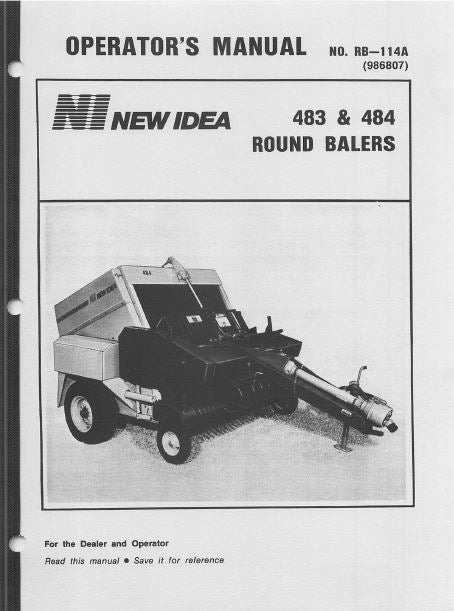New Idea Baler Manual
All information in the electronic catalog JCB Compact Service Manuals for these models is presented JCB equipment as crawler loaders JCB, backhoe loaders JCB, Loader JCB, telescopic handlers JCB. Jcb engine parts.
I had a NI 4x4 baler for about 20 years and baled thousands of bales with it. I bought it used, 2 years old, and the monitor never worked from the time I got it. I ran it with a 72 hp Case IH 885 for a few years. Then bought a decent tractor Case IH 5140, at right around 95 hp. On the monitor there is a toggle switch that you can manually put the string on the bale with. That is all that worked on my baler.
We offer Misc. Tractors tractor manuals and a variety of other items and parts for the Misc. Tractors tractors.
New Idea Baler Owners Manual
So for each bale I had to put the twine arms out, and bring them back. As for how do you know when you have a bale, well I used to set the pto rpm on the tac at 540, and bale til it dragged the tractor down to 535, then start trying to get it to take string, all the while still pulling in hay.
Usually had it stringing the bale by the time the pto rmp had dropped to 525, if not one of two things would happen. Either you would shear the pin in the pto. Or the back door would pop open, you really don't want to do either of these things, but it's not the end of the world if it happens.You just replace the pin if it breaks, and open the hatch to let the pressure off so you can restart the baler, then eject the bale unroll it, and re bale. Sounds hard to get your head around at first, but if you unroll and rebale a few, you will so learn when you have pushed things too far. To make a tight bale that will stay round,you have to really pack the hay into the bale, and get as many tight outside wraps to form a outer shell, while squeezing the center.
A good bale should have a star like shape in the center. This takes practice, and it will really help you to make a good even shaped bale if you are baling a heavy windrow. So make your windrows as big as you can get the tractor over. These balers do not like damp hay, and will plug the pickup.

Some models came with a 'Wind Guard ' attachment, kind of a bar with some three cornered bits welded to it. The idea of this was it was to help in light crops, I found it to be a pain in the butt, and pulled it out, really helps not having the 'Wind Guard ' in there if you are pulling out a plug. I could write you a whole book about these balers, but I am trying just to touch on a few things. Oil the chains every day without fail. Laced belts will not hold up over time as the strain is too great on them, use endless belts only.

Never leave a part bale in the chamber at the end of the day, because if there is a hot bearing, you will have a fire. Don't put your baler in the barn till you are sure it has cooled off, all of the bearings are sealed bearings, and they get hot and will start your baler on fire.
And because you cannot see the back of your baler from the tractor seat, any time you are off the tractor, walk around your baler, and do a visual check, to make sure all the belts are of the same tightness and alined. When a bearing goes bad on a roller, the belts will slide to one side, and rub the frame, and take fire. Mount a fire extinguisher on your baler,or in your tractor. I have had these balers on fire from the things I have outlined to you, and there isn't much out in a dry hay field to help put out even a small blaze. Bruce Hop to.